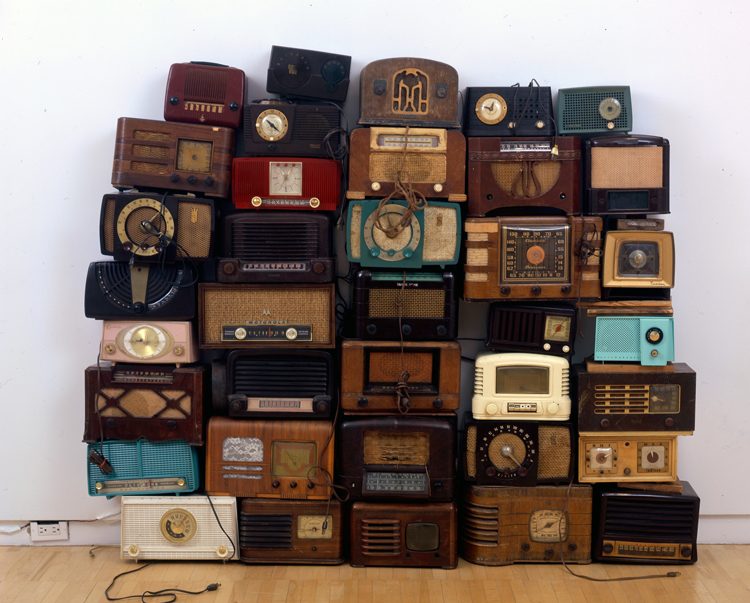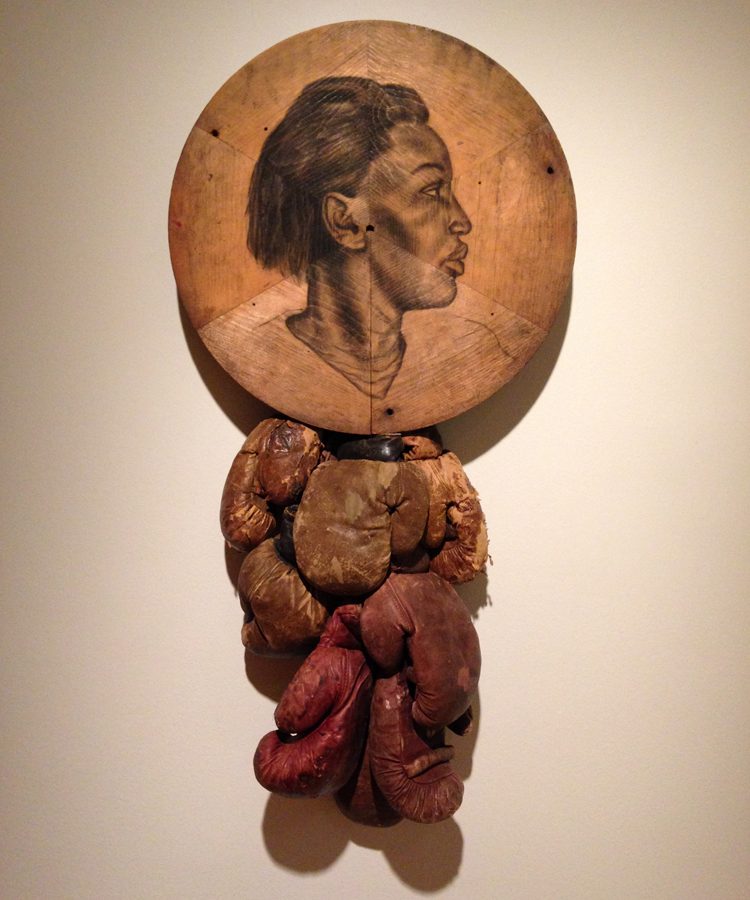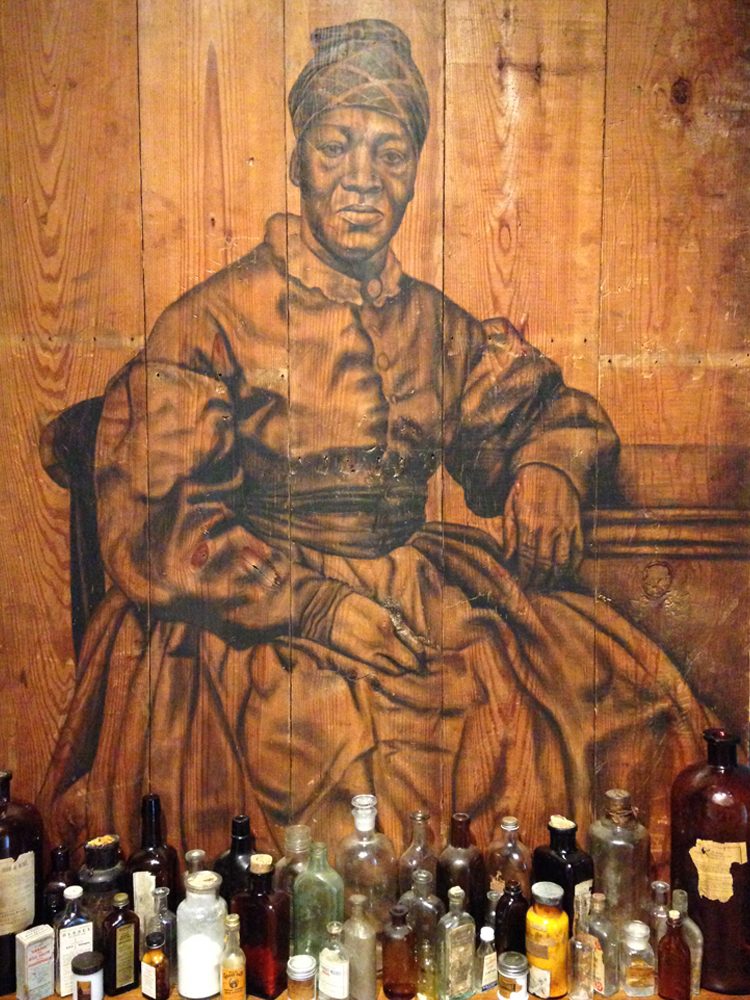The National Museum of African American History and Culture officially opens its doors tomorrow! We’re celebrating by highlighting the work of Whitfield Lovell, whose Card Series II is part of the new Smithsonian’s permanent collection, and whose Kin Series (along with a number of his other related works) are on view at the Phillips beginning Oct. 8.
1) Inspiration for Whitfield Lovell’s Kin Series images came from photo booths photos, passports photos, mugshots and the like. The artist combines freely-drawn Conté crayon faces with time-worn objects such as a brooch, clock, shoe, or mirror.

Whitfield Lovell, Kin VII (Scent of Magnolia), 2008. Conté on paper,silk flower wreath, 30 x 22 ½ x 3 in. Collection of Julia J. Norrell © Whitfield Lovell and DC Moore Gallery, New York
2) In the words of the artist, Lovell’s work examines “the markings that the past has made—and continues to make—on who we are.”

Whitfield Lovell, After an Afternoon, 2008. Radios with sound, 59 x 72 x 11 in. Courtesy DC Moore Gallery © Whitfield Lovell and DC Moore Gallery, New York
3) Lovell’s most recent works are his “tableaux,” in which he combines Conté crayon portraits on antique wood panels with found objects. The images are drawn freehand in charcoal on the panels, giving careful thought to the grain and texture of each surface,and then adds found objects to create three-dimensional tableaux.

Whitfield Lovell, Gin Song, 2004. Charcoal on wood with found objects (saxophone, metal cups), 77 1/4 x 45 3/16 x 13 in. Courtesy of the Pennsylvania Academy of the Fine Arts, Philadelphia. Mary W.F. Howe Fund © Whitfield Lovell and DC Moore Gallery, New York





